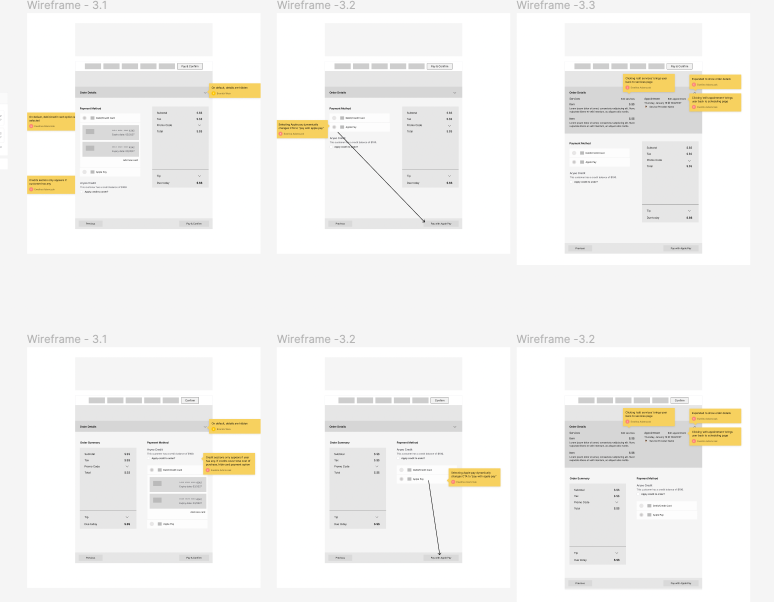Eliminate Redirects & Modals
When it came to analyzing our current payment flow, we realized that the amount of popups and redirects to Stripe/Square could be putting increased cognitive load on our users. Rather than being able to complete their payment in one go, users were forced to go through many clicks to achieve simple actions, such as adding a tip, entering a promo code, or providing their credit card details.
Maintain a uniform entry points to the payment flow
In order to make sure that all of our users have a uniform payment experience, we needed to map out all of the flows that could potentially lead to payment collection. Likewise, we had to consider all the various features that would have to be maintained with this payments redesign, namely the ability to collect full, partial, or no payment, option to pay with Apple Pay, and option to pay with saved cards or new cards. Given that certain flows would be used by different users, for instance, vendors or their customers, we needed to understand the information that will be most pertinent for them to be able to complete the payment flow.
Make this the default service provider
Before this project, we were paying more for credit card fee transactions to Stripe and/or Square. As such, we decided to develop our own processor. However, by doing so we needed to make sure that our payment processor was much better than the competition.



